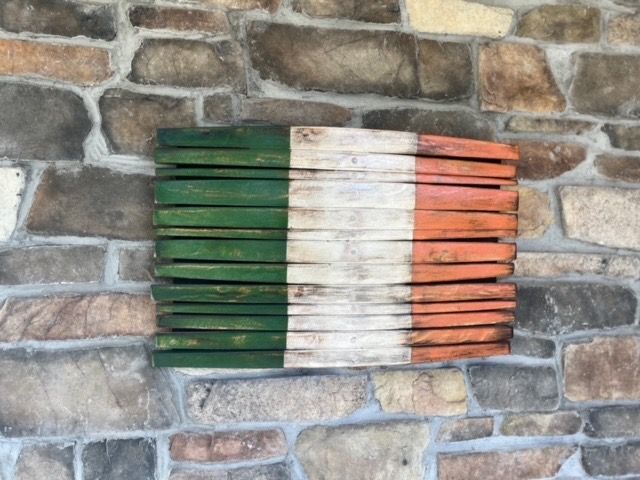Chick Donohue (left of picture) with some of the beneficiaries of his legendary 1968 Vietnam beer run
By Ray O’Hanlon
Keeping the beer cold was a challenge.
So was staying alive.
In 1967 the United States was deep into the Vietnam War, but not quite yet bogged down in it.
It was turning out to be hard slog, but not unwinnable.
At least that’s how it seemed from a New York City bar when the challenge went down.
’67 went down in the books as the year that included the “summer of love.”
It was also a year of mounting criticism and protest against the war on the far side of the world.
John Donohue, who would later become leader of the Sandhogs union Local 147 and be known as “Chick” to all who knew him, was 26-years-old that year, and he had served his country in the United States Marine Corps.
By Vietnam standards he was, if not an old man, at least a fairly grizzled veteran.
As a veteran, Donohue could keep his distance from the rice fields, the jungles and the highlands of a divided land where a hot war was being waged as a result of a cold one.
Donohue had maintained his connection to the oceans by becoming a merchant seaman after his Marines service.
He was ashore when the idea was proposed in that bar, which was in Inwood in upper Manhattan.
Lots of crazy ideas take form in bars. Most of them never get outside the door.
But this one would.
It was suggested that, given the rising clamor of ant-war protests, one of the group of buddies that night should travel to Vietnam, somehow infiltrate the war, and deliver messages of support from loved ones in the United States to Marine Corps pals “in country.”
Messages and beer.
Chick Donohue volunteered for the mission and what happened next was that he sailed to Vietnam on a cargo ship, the “Drake victory,” carrying a backpack full of beer.
He landed in Qui Nho’n, the capital of Binh Dinh province in central Vietnam, in early 1968.
This was not good timing.
Unbeknownst to Chick, indeed unbeknownst to top American military brass, the Viet Cong and North Vietnamese were planning a big offensive.
It would go down in history as the Tet Offensive.
Volumes have been written about the Tet Offensive, but only one volume describes Chick Donohue’s one man counter offensive - with beer.
It was not the beer that he had lugged from the U.S. That stash, suffice it to say, did not survive the long ocean voyage. But he was able to restock once making landfall in Qui Nho’n.
Here’s where the tale is taken up in a story written for the website Task & Purpose.com and itself in part based on what Chick Donohue would tell the New York Times.
“Shortly after pulling in, Donohue noticed the unit insignia on a group of military police officers who were inspecting the Drake Victory.
“They were from the 127th Military Police Company, the same unit as one of the names on his list: Tom Collins.
“Donohue, known as a smooth and quick talker, pulled one of the MPs aside and spun a sob story about looking for his brother-in-law, gave the man Collins’ name, and then waited. Not long after that, Collins arrived.
“After sharing a few drinks with Collins, Donohue set off to find the other names on his list. Donohue went from Qui Nhon, to Khe Sahn, then to Saigon, striking off names and handing out beers, then restocking.
“Donohue talked his way onto convoys, military mail planes, and transport helicopters.”
Then came Tet and Donohue found himself stranded as his ship had left port without him.
Donohue did, of course, eventually make it back home to New York.
His mission would embed itself in local lore and is now recounted in a just published book, “The Greatest Beer Run Ever,” which has been penned by himself and Daily News writer Joanna Molloy. The book is to be the reason for raised glasses at a launch gathering at the American Irish Historical Society on Fifth Avenue.
Not too far from Inwood, but a fair stretch from a city that most of its inhabitants still call Saigon.










